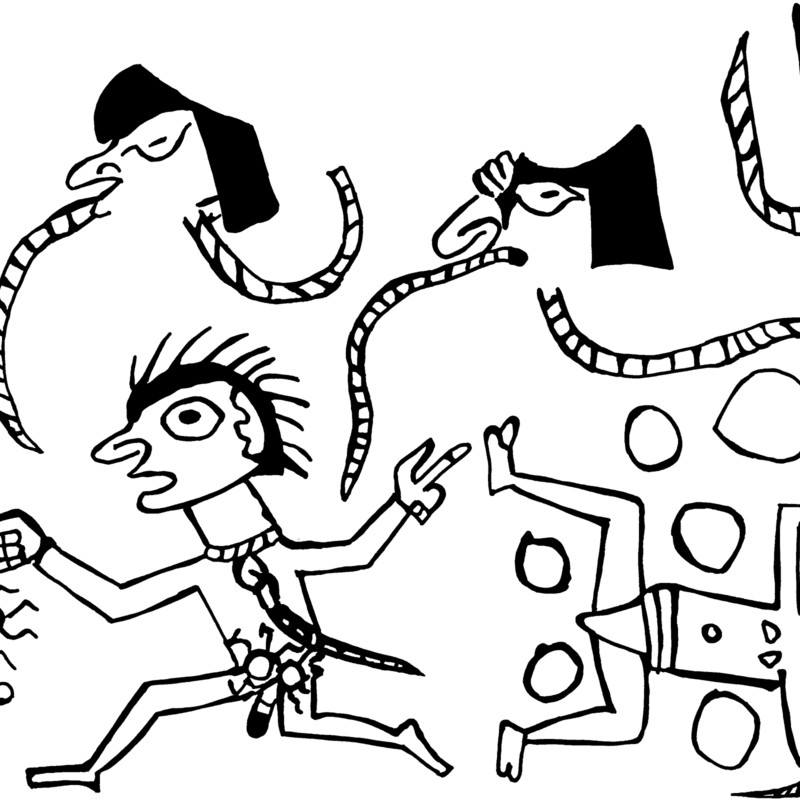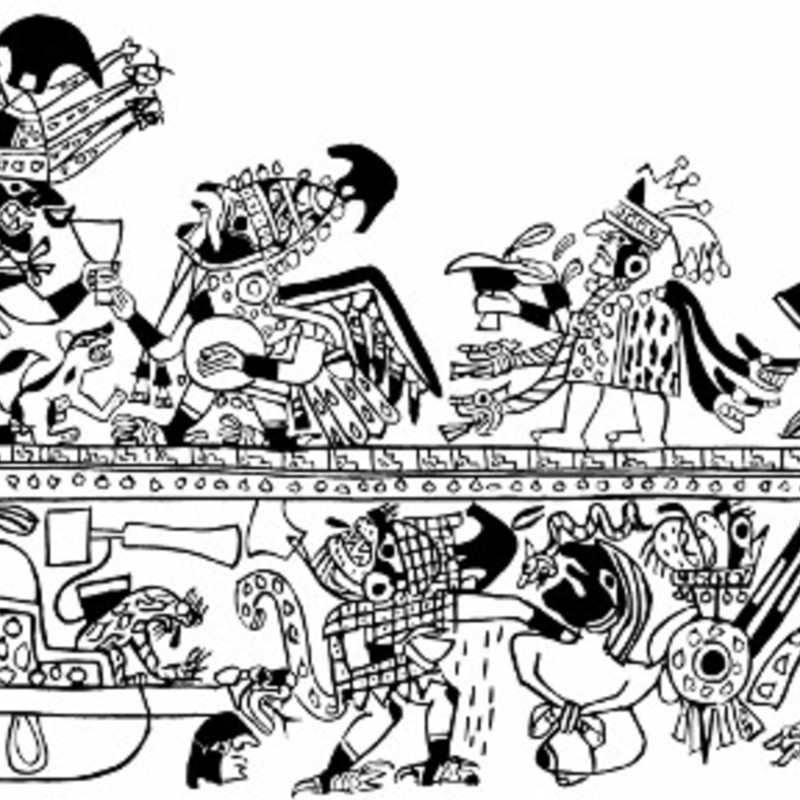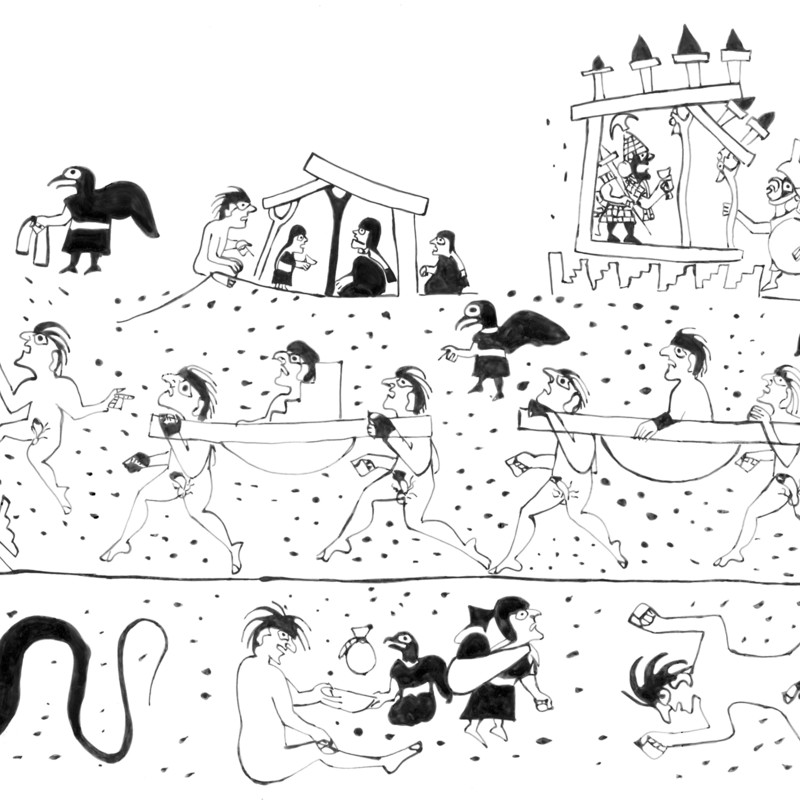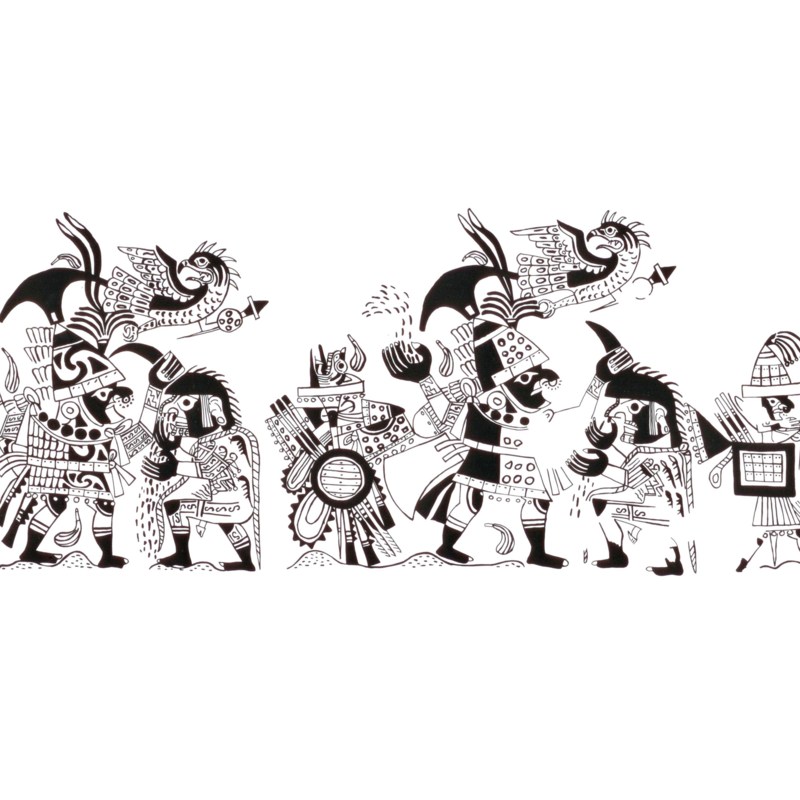Moche Depictions of Warfare
Description
The Moche Archive of photographs and drawings, created by Christopher Donnan and now housed at Dumbarton Oaks, is a remarkable resource for the study of Moche civilization. Flourishing on the north coast of Peru between 100 and 800 CE, the Moche created ceramic vessels richly decorated with detailed, fineline paintings that relate complex tales. The surviving ceramics provide a wealth of information about Moche society and iconography. In 1966 Donnan began to document the art of the Moche by photographing the vessels, while his colleague, Donna McClelland, began drawing the images found on them. The archive that Donnan assembled now consists of approximately 160,000 photographs of Moche objects from museums and private collections around the world, accompanied by McClelland’s drawings.
The fineline paintings that wrap around Moche ceramic vessels cannot be captured by a single photograph, so Donna McClelland’s drawings enhance access to the thematic contents of the vessels’ decoration. These drawings, created to facilitate study of the ceramic vessels, are art objects in their own right. McClelland described the challenges of her process:
“The problem of making a flat rollout drawing of the design on a spherical vessel is similar to that of a cartographer making a flat map of the spherical earth. Something similar to an ‘orange-peel’ map, rather than a Mercator projection must be created. Spaces are left at the top and bottom of the drawing to account for the conversion from a three-dimensional to a two-dimensional drawing. The need for this extra space must be balanced against the need to have figures interact and be juxtaposed in a manner similar to the composition on the vessel. This requires an understanding of the art to know where these juxtapositions should occur.” (Moche Fineline Painting, 1999)
For the purposes of this exhibit, we have selected several drawings of images of warfare. Over the centuries, Moche artists painted a variety of subjects, including abstract geometric patterns, animals, supernatural figures, and scenes of ceremony and everyday life. Warfare was a recurring theme, especially in Phases IV and V, the Middle and Late Phases of Moche civilization.
Moche artists frequently depicted warriors and warrior activities, and hundreds of these depictions can be found in museums and private collections today. The combat they depict appears to be ceremonial rather than militaristic. There are no depictions of warriors attacking castles or fortified settlements, or killing, capturing, or mistreating women or children. Moreover, there is no portrayal of equipment or tactics that involved teams of warriors acting in close coordination. We see no regular formations of troops like Greek phalanxes, or siege instruments whose operation would have involved trained squads of individuals. Although there are a few depictions of two warriors fighting a single opponent, the essence of Moche combat appears to have been the expression of individual valor, in which the warriors engage in one-on-one combat. Only rarely were combatants killed; the goal appears to have been to capture the opponent for ritual sacrifice.
The elaborate clothing and ornaments worn by Moche warriors indicate that they were people of high status -- almost certainly members of the aristocracy. They must have willingly participated in combat, even though capture and sacrifice of some of the participants would have been the predictable outcome.
Collector(s)
- Christopher Donnan
View the items in Moche Depictions of Warfare




